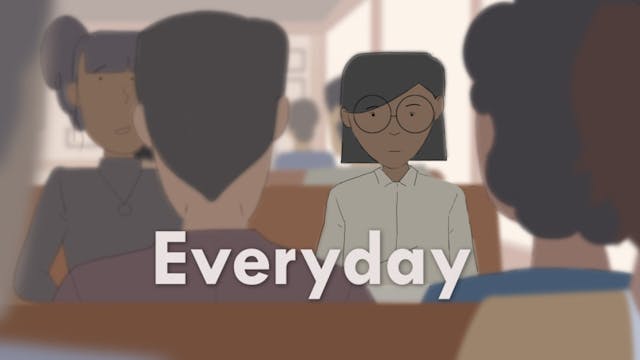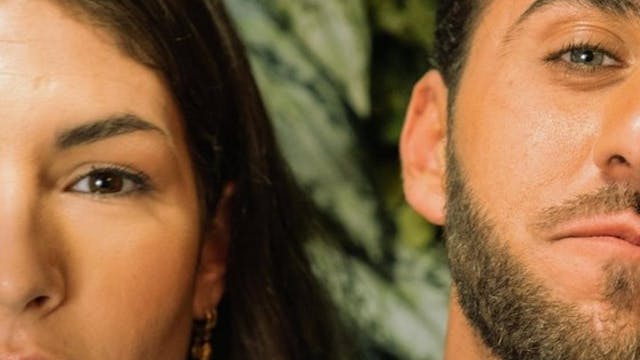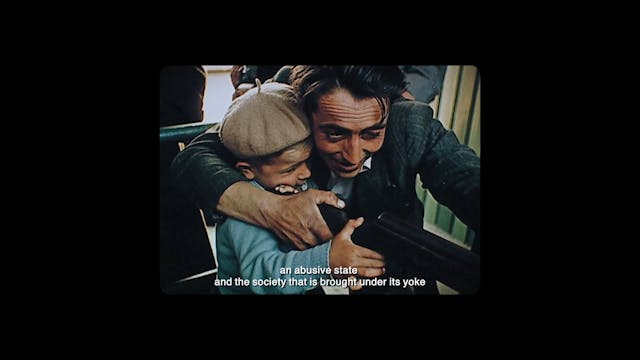A CHALET AT THE FOOT OF THE FIZ short film, audience reactions (with interview)
FESTIVAL AUDIENCE FEEDBACK VIDEOS
•
Documentary, Short Films
A CHALET AT THE FOOT OF THE FIZ, 36min., France, Documentary
Directed by Godefroy de Maupeou
An elderly woman returns to her chalet at the foot of the Chaîne des Fiz and finds the draft of a letter she had written years earlier.
Get to know the filmmaker:
1. What prompted you to make this film?
I live in Passy, at the foot of the Fiz.
I went regularly to Lake Anterne but I didn’t go any further. A few years ago I took the step to continue and I was amazed by the variety of landscapes. I absolutely did not expect it. Arrived in the valley of Sales I saw these waterfalls and I said to myself that, me who dreamed of going to Iceland, I really had the impression of being there.
When I got back, I talked about it to those around me and almost no one had been further than Lac d’Anterne (this very year a former Mayor of Passy admitted it to me after seeing the film).
I looked on the Internet for information on the Tour des Fiz and I realized that if it was considered one of the most beautiful hikes, the photos that we found did not reflect what we feel on the spot.
From there I said to myself that we had to make a film on the Tour des Fiz.
I put the idea aside and at the end of 2019, I spoke about it to the new municipal team of Passy. They liked the idea and decided to participate.
In 2020 I started looking for how to tell this Tour de Fiz. I didn’t want to make a classic documentary, but a film that takes the viewer into this universe and makes them want to “go back” there once the credits are over. I also wanted it to be contemplative, interior.
There are films on the Fiz trail where athletes do it by running in a few hours. On the contrary, I wanted us to take the time to discover and appreciate the landscape, to immerse ourselves throughout the seasons.
And then, to continue with this idea, there is the Salon International du Livre de Montagne in Passy, the first of its kind (in France at least). I wanted to mix literature with landscape.
Ella Maillart having lived in the region and Hemingway having stayed there, I imagined a dialogue between these two adventurous writers, one introducing the other to this place. They traveled the world while it was all at their feet. It also corresponds to our time: why take the plane, with all the pollution that entails, when close to home you can also have magnificent places.
My wife (a professor of history and geography) who was doing historical research for the film, discovered that Ella Maillart had been honorary president of the Salon International du Livre de Montagne in Passy for one year. It then became obvious that the film had to be made on this theme. Ella Maillart would recount her discovery during her presidency of the show.
I also thought of Karen Blixen, I wanted to have strong, exceptional female writer characters. She and Ella Maillart are people I have always admired. I still have in my head the sentence that begins Karen Blixen’s story “I had a farm in Africa”. It’s a great way to start an extraordinary story, a kind of once upon a time.
Out Of Africa was an eye-opening film that made many (including me) want to go to Africa. I said to myself then that if I started with a sentence reminiscent of that of Karen Blixen, I would perhaps also put in the minds of potential spectators that this film would make them want to do the Tour des Fiz.
At the beginning the character explained that the chalet had been lent to her when she was president of the Salon International du Livre de Montagne de Passy. But that broke everything.
This part took up too much space. I like sobriety and we no longer found Karen Blixen’s sentence, simple, obvious and which announces a strong story with this explanatory ball.
So I removed this reference to the living room in the scenario. It’s just indicated in the final credits and that’s more than enough in my opinion.
The title stood out. Karen Blixen’s book is called “A Farm in Africa”, echoing the film would be called “A Chalet at the foot of the Fiz ».
I had the theme, the principle but not the end.
For me it’s important that films have a real, strong, surprising ending and one day I said to myself that it would be nice if we saw Hemingway at the end. It would also be the way, at the last moment, to finally give the answer to “who are these two people”. Hemigway is recognizable and he says “It’s wonderful Ella”. We then know the names of the two writers.
It also allows you not to stay on a nostalgic note with the passage before, the one that evokes the ephemeral, the life that ends with the landscape that is preparing to be covered by snow and cold.
This is a passage that I hold very dear. He brings an emotion and the beginning of an explanation to this letter. He then directs the film into another dimension, that of passing time and touches us as we age. It is also the passage of time on our changing landscapes. Species disappear, others arrive… it’s never the same. The music takes on “Eastwood” accents and reinforces the inner side, even this look at what we have experienced.
After that, a more optimistic note was needed, the dream is possible and the sequence with Hemingway arrives as if he had received the letter and been able to make this discovery.
2. From idea to finished product, how long did it take you to make this film?
The idea came in 2015, the proposal to make a film on the subject at the end of 2019 and I started working on the subject at the beginning of 2020. Filming started in the spring of 2020 and ended in the fall of 2021. The end with Hemingway was found in the summer of 2021.
3. How would you describe your film in two words!?
Contemplative, inner
4. What was the biggest hurdle you had to face to finish this movie?
The difficulty of carrying the equipment (between 18kg and more than 20kg) when it was necessary to return many times to the filming locations to have the good times. There were 19 days of filming with sometimes elevations of more than 1000 meters during the day. And then there was the weather. Many rainy days during the summer of 2021.
5. What were your first reactions when you saw the audience talking about your movie in the throwback video?
Very touched. They saw and understood what I wanted to do. It is an invaluable contribution, the human relationship that is missing in the virtual. All of a sudden, the festival exists and we have people who have seen the film and who talk about it, and moreover with enthusiasm which is magnificent. 🙂
I immediately published the YouTube link on my personal page and that of the film on FaceBook. 🙂
6. When did you realize you wanted to make movies?
Very young, as soon as I discovered the cinema. I collected catalogs of Super 8 cameras, cut out reviews of westerns that I filed. In primary school, my friends said that at thirteen they would have a moped. I answered them that I wouldn’t have a moped but a Super 8 camera. But hey, my parents hadn’t planned to buy me a moped, when I told them my expectation, I didn’t have a Super camera. 8 (or moped) at thirteen 😉 When I was around 17, when I started working during the holidays, I bought it with the money and then I switched fairly quickly to a Beaulieu R16. 😉
On the other hand for my thirteen years I asked for my birthday to be able to see Once upon a Time in the West. I cried while listening to the theme of Jill by Ennio Morricone and I dreamed of seeing this film banned for at least thirteen years. However, this wish was granted. 🙂 My parents, artists, took me to the cinema a lot. When I was young, I was able to see films by the Taviani brothers, Eisenstein… I loved westerns and I walked for miles to see those who passed through my region.
7. What movie have you seen the most in your life?
Hard to say, I’ve seen so many. At the time when VHS were just arriving, the quality having nothing to do with the cinema screen, I went to theaters all the time (sometimes I went to see three films a day). I rewatched the movies I liked many times. When they came out, I saw Excalibur nine times, more than ten times Blade Runner. I think those are the highest scores in movies, but with DVDs and Blu-rays there are movies that I’ve definitely seen more times. I saw
Rear Window and Once Upon a Time in the West almost every summer at one time.
I would say that if I had to name one film above all the others, the one that I consider to be the greatest film in the history of cinema, it would be Sergio Leone’s Once Upon a Time in America.
But I like a lot of very different directors I have more than 1800 films at home and I watch some of them regularly. It ranges from Sergio Leone, Ridley Scott, Clint Eastwood, Christophe Nolan, Sam Mendes, David Fincher, Robert Redford, Brian de Palma to Wim Wenders, Werner Herzog, Stephen Daldry, Bille August, Atom Egoyan, Kirsten Sheridan, Ken Loach, Spike Jonze, Jane Campion, Paul Thomas Anderson, Kelly Reichardt, Giuseppe Tornatore, Jean Renoir, Cédric Klapish… there are so many of all styles and from all countries.
8. What other elements of the festival experience can we and other festivals implement to satisfy you and help you further your film career?
Apart from commissions, I produce my own films myself. I would like to find a producer to work with, which would allow me to stop orders to devote myself to my own films only. I am a perfectionist and editing takes a lot of time.
I would say that anything that allows us to expand our audience is good: viewing films to producers, distributors, audiences… the prizes serve that purpose and I am deeply grateful to those I receive.
9. You submitted to the festival via FilmFreeway. How did you work on the festival platform site?
I searched according to the subject, nature, literature in the context of Un Chalet au pied des Fiz. I also look at the festival listings. The country can count. I love Denmark and the Nordic countries.
My parents took us there when we were children and I am going back with mine and my wife who also fell in love with these countries. I would love to shoot there. There are also festivals that ask for one of my films. I always pay attention to it and try to answer it if I have the means to register it at that time.
Of course I submit my new films to those who have already given me awards.
Since I have been trying to get my films financed by the CNC, I have a list of festivals that would allow me, if I won a prize there twice, to obtain aid for the production. I recently registered my films for these festivals.
10. What is your favorite dish?
I love cheese. A well-flowing Reblochon or Mont-d’Or is divine 🙂
I also really like creative gastronomy. I like to discover dishes that I do not make at home.
11. What’s next for you? A new movie?
Several. I have two feature films in the works.
Up Next in FESTIVAL AUDIENCE FEEDBACK VIDEOS
-
EVERYDAY short film, audience reactio...
EVERYDAY, 7min., India, Animation
Directed by Smita Minda
Everyday is a film about eco-anxiety, and how it keeps a girl named Judith from being able to have fun even at a birthday lunch with her friends. Having read too many articles full of bad news, and seen videos of the world coming to an end... -
ENTOMOS PHAGOS short film, audience r...
ENTOMOS PHAGOS, 2min., France, Drama
Directed by Florian Le Tavernier ARM
"Between his ecologist mother and his very careerist and non-chalaching father, Nathan does not hesitate to face their contradictions in a surprising way." -
TYRANNY short film, audience reactions
TYRANNY, 12min., Hungary, Documentary/Experimental
Directed by David Adamko
A dysfunctional society controlled by a toxic leader results in the reality of illiberalism and the sole autocratic EU member state is leading the way. Recently, an angular black hole appeared in the centre of this nation...


